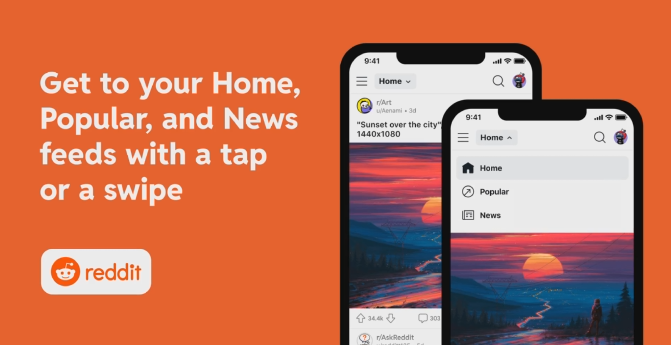SEO
Switching from Google Analytics—here’s what you need to know

Google has dominated the data analytics marketplace for so long that it might feel daunting to switch. You may have reservations about an alternate platform because you have been conditioned to think there is no other tool that can live up to Universal Analytics.
We are here to reassure marketers that is not the case—switching has never been easier. Especially since Google recently announced they would be sunsetting their Universal Analytics platform.
If you made it here, you are likely to have already done your research on the pitfalls and limitations of Universal Analytics’ successor, Google Analytics 4. If not, it is worth reading ‘Google Analytics 4: drawbacks and limitations—is it worth sticking around?’.
Chances are, you have taken notice of the laundry list of issues with Google Analytics 4 and are considering jumping ship. This could be because of data quality or limitations, a lack of privacy-friendly features, or transparency in handling data.
As a marketer or analyst, you need to make an informed decision and choose the platform whose feature sets fit your organization’s needs to process user-level data while building trust with visitors. This article will help relieve some of the cognitive dissonances you may be experiencing. Let’s get into it:
Which is better, a free plan or a paid one?
It all comes down to the compromises and limitations you can accept depending on your project. Here are some key differences:
Free plan
Free web analytics platforms always have constraints—whether it is reduced performance, lack of solid privacy features, or sampled data. Nevertheless, a free web analytics platform can help you run your projects successfully.
Certain platforms ensure an easy upgrade from free to paid and more advanced versions. They also let you keep the setup, data, tags, etc., so you do not have to start collecting data from scratch. Others just eliminate the limitations and lift the price.
Paid alternatives
Paid alternatives overcome the limits of their free forerunners and grant more options for data collection and analysis. This includes the performance of the analytics platform, data protection, and extensive customer support.
For many organizations, the standard data safeguards of public clouds are sufficient. However, those operating in jurisdictions with strict data privacy regulations or highly regulated industries, like finance or healthcare, might require a private cloud or on-premises hosting. This is when having a paid plan would be necessary.
Piwik PRO offers both a free and paid plan so different kinds of organizations can get the service tailored to their needs.
Which is better, public, private cloud, or a self-host cloud?
Storing data on in-house servers used to be the gold standard for executing analytics safely and securely. Though, cloud-based analytics platforms have been steadily gaining market share.
Here is how they differ:
Public cloud
Public cloud is the most widely used model on the market. Storage space is shared between all the organizations that lease the environment from the same company. Public clouds are recommended for small and medium-sized organizations since they are more cost-efficient and quicker to deploy than the other options.
A drawback of public clouds is storing data on the external provider’s servers. The responsibility for data security rests with the provider. While this may be convenient, it limits how you can protect your data.
Some companies need to comply with strict internal data protocols or data residency regulations. With Piwik PRO, marketers can choose between four cloud hosting options— Germany, the Netherlands, the U.S., and Singapore.
Private cloud
Another type of deployment is through a private cloud. This model is often called “company cloud” or “organization cloud” because it is built exclusively for one organization. Companies that want to, or must separate their data from other cloud users who choose private cloud. This gives them the convenience of using the a public cloud with better data security.
A downside of a private cloud is the cost is significantly higher than a public because it requires the building of new infrastructure. Additionally, the installation time for private cloud is typically longer than with public cloud. For example, with Piwik PRO, the technical onboarding for private cloud clients takes about two weeks.
On-premises (self-hosted)
In an on-premises model, the infrastructure is built and managed by the company or organization, with employees having physical access to all resources. The company stores the data on its own servers or servers that they rent or lease from third parties.
Storing data in a chosen location and having full physical access to the infrastructure allows companies to process personal data securely. However, the costs related to the on-premises solution are significant and building and running your own data center is a long and complicated process.
Myths vs. Facts about switching analytics platforms
Despite the advancements of alternative platforms, some organizations are hesitant to make the move away from Google Analytics. To help dispel common fears and bring awareness to other platforms, here are the common misconceptions about switching:
I’ll lose historical data
This is a fact, but not for long. Some alternatives have developed data importers in the wake of Universal Analytics being deprecated.
Alternatives are not integrated with Google
This is a myth. Alternatives are designed to work seamlessly with other Google solutions and partner products.
I miss some reporting capabilities
This is false. Each alternative has unique reporting capabilities, and some are very flexible, allowing for more transformations and data exports than Universal Analytics.
It is easier to run advertising campaigns with Universal Analytics
This is true. There is deep integration with Google Analytics and Google Ads/Google Marketing Platform, which gives access to an extensive repertoire of data.
I’ll lose my rank in Google Search
This is a myth. Alternatives’ customers do not report a lower rank in Google Search. Make sure your site is fast, mobile-friendly, popular (links), and with complete metadata.
Where should you go from here?
As the importance of compliance with regulations is growing, marketers should consider analytics platforms that offer a full set of privacy features.
Our intention with Piwik PRO Analytics Suite has always been to give clients powerful analytics capabilities along with key privacy and security features.
While we cannot tell you exactly what platform is right for your organization, we can help with your research.
If you’d like to learn more about Google Analytics alternatives or get more information on the Piwik PRO Analytics Suite, visit piwik.pro.
SEO
Google Declares It The “Gemini Era” As Revenue Grows 15%

Alphabet Inc., Google’s parent company, announced its first quarter 2024 financial results today.
While Google reported double-digit growth in key revenue areas, the focus was on its AI developments, dubbed the “Gemini era” by CEO Sundar Pichai.
The Numbers: 15% Revenue Growth, Operating Margins Expand
Alphabet reported Q1 revenues of $80.5 billion, a 15% increase year-over-year, exceeding Wall Street’s projections.
Net income was $23.7 billion, with diluted earnings per share of $1.89. Operating margins expanded to 32%, up from 25% in the prior year.
Ruth Porat, Alphabet’s President and CFO, stated:
“Our strong financial results reflect revenue strength across the company and ongoing efforts to durably reengineer our cost base.”
Google’s core advertising units, such as Search and YouTube, drove growth. Google advertising revenues hit $61.7 billion for the quarter.
The Cloud division also maintained momentum, with revenues of $9.6 billion, up 28% year-over-year.
Pichai highlighted that YouTube and Cloud are expected to exit 2024 at a combined $100 billion annual revenue run rate.
Generative AI Integration in Search
Google experimented with AI-powered features in Search Labs before recently introducing AI overviews into the main search results page.
Regarding the gradual rollout, Pichai states:
“We are being measured in how we do this, focusing on areas where gen AI can improve the Search experience, while also prioritizing traffic to websites and merchants.”
Pichai reports that Google’s generative AI features have answered over a billion queries already:
“We’ve already served billions of queries with our generative AI features. It’s enabling people to access new information, to ask questions in new ways, and to ask more complex questions.”
Google reports increased Search usage and user satisfaction among those interacting with the new AI overview results.
The company also highlighted its “Circle to Search” feature on Android, which allows users to circle objects on their screen or in videos to get instant AI-powered answers via Google Lens.
Reorganizing For The “Gemini Era”
As part of the AI roadmap, Alphabet is consolidating all teams building AI models under the Google DeepMind umbrella.
Pichai revealed that, through hardware and software improvements, the company has reduced machine costs associated with its generative AI search results by 80% over the past year.
He states:
“Our data centers are some of the most high-performing, secure, reliable and efficient in the world. We’ve developed new AI models and algorithms that are more than one hundred times more efficient than they were 18 months ago.
How Will Google Make Money With AI?
Alphabet sees opportunities to monetize AI through its advertising products, Cloud offerings, and subscription services.
Google is integrating Gemini into ad products like Performance Max. The company’s Cloud division is bringing “the best of Google AI” to enterprise customers worldwide.
Google One, the company’s subscription service, surpassed 100 million paid subscribers in Q1 and introduced a new premium plan featuring advanced generative AI capabilities powered by Gemini models.
Future Outlook
Pichai outlined six key advantages positioning Alphabet to lead the “next wave of AI innovation”:
- Research leadership in AI breakthroughs like the multimodal Gemini model
- Robust AI infrastructure and custom TPU chips
- Integrating generative AI into Search to enhance the user experience
- A global product footprint reaching billions
- Streamlined teams and improved execution velocity
- Multiple revenue streams to monetize AI through advertising and cloud
With upcoming events like Google I/O and Google Marketing Live, the company is expected to share further updates on its AI initiatives and product roadmap.
Featured Image: Sergei Elagin/Shutterstock
SEO
brightonSEO Live Blog

Hello everyone. It’s April again, so I’m back in Brighton for another two days of Being the introvert I am, my idea of fun isn’t hanging around our booth all day explaining we’ve run out of t-shirts (seriously, you need to be fast if you want swag!). So I decided to do something useful and live-blog the event instead.
Follow below for talk takeaways and (very) mildly humorous commentary. sun, sea, and SEO!
SEO
Google Further Postpones Third-Party Cookie Deprecation In Chrome

Google has again delayed its plan to phase out third-party cookies in the Chrome web browser. The latest postponement comes after ongoing challenges in reconciling feedback from industry stakeholders and regulators.
The announcement was made in Google and the UK’s Competition and Markets Authority (CMA) joint quarterly report on the Privacy Sandbox initiative, scheduled for release on April 26.
Chrome’s Third-Party Cookie Phaseout Pushed To 2025
Google states it “will not complete third-party cookie deprecation during the second half of Q4” this year as planned.
Instead, the tech giant aims to begin deprecating third-party cookies in Chrome “starting early next year,” assuming an agreement can be reached with the CMA and the UK’s Information Commissioner’s Office (ICO).
The statement reads:
“We recognize that there are ongoing challenges related to reconciling divergent feedback from the industry, regulators and developers, and will continue to engage closely with the entire ecosystem. It’s also critical that the CMA has sufficient time to review all evidence, including results from industry tests, which the CMA has asked market participants to provide by the end of June.”
Continued Engagement With Regulators
Google reiterated its commitment to “engaging closely with the CMA and ICO” throughout the process and hopes to conclude discussions this year.
This marks the third delay to Google’s plan to deprecate third-party cookies, initially aiming for a Q3 2023 phaseout before pushing it back to late 2024.
The postponements reflect the challenges in transitioning away from cross-site user tracking while balancing privacy and advertiser interests.
Transition Period & Impact
In January, Chrome began restricting third-party cookie access for 1% of users globally. This percentage was expected to gradually increase until 100% of users were covered by Q3 2024.
However, the latest delay gives websites and services more time to migrate away from third-party cookie dependencies through Google’s limited “deprecation trials” program.
The trials offer temporary cookie access extensions until December 27, 2024, for non-advertising use cases that can demonstrate direct user impact and functional breakage.
While easing the transition, the trials have strict eligibility rules. Advertising-related services are ineligible, and origins matching known ad-related domains are rejected.
Google states the program aims to address functional issues rather than relieve general data collection inconveniences.
Publisher & Advertiser Implications
The repeated delays highlight the potential disruption for digital publishers and advertisers relying on third-party cookie tracking.
Industry groups have raised concerns that restricting cross-site tracking could push websites toward more opaque privacy-invasive practices.
However, privacy advocates view the phaseout as crucial in preventing covert user profiling across the web.
With the latest postponement, all parties have more time to prepare for the eventual loss of third-party cookies and adopt Google’s proposed Privacy Sandbox APIs as replacements.
Featured Image: Novikov Aleksey/Shutterstock
-

 PPC7 days ago
PPC7 days ago19 Best SEO Tools in 2024 (For Every Use Case)
-
SEARCHENGINES6 days ago
Daily Search Forum Recap: April 19, 2024
-

 WORDPRESS7 days ago
WORDPRESS7 days agoHow to Make $5000 of Passive Income Every Month in WordPress
-

 WORDPRESS5 days ago
WORDPRESS5 days ago13 Best HubSpot Alternatives for 2024 (Free + Paid)
-

 MARKETING6 days ago
MARKETING6 days agoBattling for Attention in the 2024 Election Year Media Frenzy
-

 SEO7 days ago
SEO7 days ago25 WordPress Alternatives Best For SEO
-

 WORDPRESS6 days ago
WORDPRESS6 days ago7 Best WooCommerce Points and Rewards Plugins (Free & Paid)
-

 AFFILIATE MARKETING7 days ago
AFFILIATE MARKETING7 days agoAI Will Transform the Workplace. Here’s How HR Can Prepare for It.









You must be logged in to post a comment Login